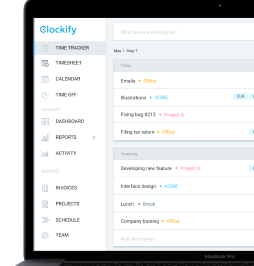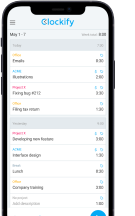
You’ve probably wondered what happens to the unused PTO hours you’ve accumulated during your employment after it ends.
While the Fair Labor Standards Act (FLSA) doesn’t require employers to offer any paid time off (sick leave, vacation leave, etc.), in most states, employers can choose to provide such benefits to their employees to boost employee productivity and morale.
Moreover, some states have state laws that allow employees to request payment when they want to cash in their unused vacation time upon leaving their jobs.
If you are wondering what you can expect when it comes to your unused paid time off, you will get your answers in this PTO payout laws guide by state.
In this guide, we’ll cover the following:
*Note: The information regarding PTO payout laws and regulations by state has been checked and updated for 2024.

Table of Contents
Before we get to the PTO payout laws by state, let’s first cover some basics related to unused paid time off.
To explain some essential PTO payout terminology, we’ll answer the following questions:
So, let’s start right away.
PTO or Paid Time Off is a benefit that enables employees to take leave from work while still getting paid. Employees usually take leave for vacation, sickness, or any other personal matter.
Some of the most common types of PTO include the following:
Whether the above-mentioned leaves will be paid or not depends on the employer and/or the state law.

EXTRA FEATURES • UNLIMITED USERS
PTO & vacation tracker
Request and track vacation time, sick leave, personal time, and other types of leave in a team of any size.


Depending on the company’s policy and state regulations, the employer may give a PTO payout to an employee for their unused paid time off upon termination.
PTO payout is based on the accrued vacation time an employee hasn’t used by the end of their employment. Individual companies’ PTO policies define rules such as:
While PTO covers any paid time away from work, be it sick leave, jury duty, or any other leave listed above in the text, vacation pay refers only to paid time off that an employee uses to take a break with their family, partner, or for whatever personal reasons they have.
In other words, vacation pay doesn’t include sick leave or holidays. For example, employees mostly use vacation pay to get away from the office and enjoy well-earned time off.
So, for instance, according to the most recent US Bureau of Labor Statistics news release, the average number of paid vacation days is 11 days after 1 year of work in private industry and 13 days after 1 year in state and local governments.
Therefore, how many days of paid vacation you get depends on:
🎓 Clockify Pro Tip
If you’d like to learn more about the difference between PTO and vacation, our blog post on the subject will surely be helpful.
A use-it-or-lose-it policy refers to the situation where the employee has to either use their PTO by a certain date (for example, by the end of the year) or forfeit it. In other words, if you don’t use your PTO by a certain date, your employer can take away your unused paid time off.
A use-it-or-lose-it policy generally doesn’t allow employees to transfer any unused and accrued vacation they accumulated from one year into the next year.
Although these types of policies are illegal in some states, for those states where there are no state laws against them, companies may use a use-it-or-lose-it policy as long as it is clearly explained and presented to all workers.
PTO payout laws differ from state to state. Not all US states have PTO payout laws, and in most states that do, PTO payout laws only apply to earned vacation time.
Here’s the table with states where the payout of accrued vacation is regulated by law, as well as those states where PTO payout is regulated through the employer’s policy.
| State | State Statutory requirements addressing vacation pay | Use-it-or-lose-it policy | Payment of accrued vacation on separation | Employer penalty for failing to pay accrued vacation time |
|---|---|---|---|---|
| Alaska | Vacation pay is a benefit promised under the employer’s policy or an agreement. | No state laws relating to the use-it-or-lose-it policy. | Determined by the employer’s policy or an agreement. | Not specified by the state law. |
If the employer fails to comply with the payment order issued by the Illinois Department of Labor (IDOL), they will also have to pay an administrative fee ranging from $250 to $1,000.
Employers who fail to comply with IDOL’s order in a timely manner have to pay a penalty of 20% of the unpaid wages to IDOL. The employer has to pay a penalty of 1% of the unpaid wages to the employee for each day the payment is delayed.
Employers who fail to pay final wages that are less than $10,000 can be charged with Class 1 misdemeanor.
If the wages owed are more than $10,000, the employer can face a Class 6 felony charge.

EXTRA FEATURES • UNLIMITED USERS
PTO & vacation tracker
Request and track vacation time, sick leave, personal time, and other types of leave in a team of any size.


To get more helpful information about PTO payout laws, let’s check out some frequently asked questions we’ve singled out for you.
Depending on the company’s policy and state laws, employers may or may not pay their employees for earned and unused paid time off after they leave a job. That being said, some employers can choose not to provide PTO payout after termination (if there’s no state law that requires them to do so).
Only a few states have laws that regulate the employer’s policy regarding payment of unused vacation time, but in most cases, employers set their own rules for PTO payout.
Therefore, if you’re considering leaving your position, make sure to check your rights in your employer’s PTO policy and whether your employer pays out earned paid time off upon separation of employment.
🎓 Clockify Pro Tip
Need some useful PTO templates to present your PTO policy to your employees? Here are 11 PTO policy templates that you can use for free.
If a state you work in doesn’t specifically address that the employer must pay for unused vacation days, check whether your employer has a PTO policy stating your rights to PTO payout upon termination.
Most of the states that require payment for unused paid time off have laws that only apply to earned vacation time. Also, some states require PTO payout, but only after certain conditions are met, and others classify vacation pay as wages and include them in an employee’s final paycheck.
To see the states that have laws requiring payment of the unused PTO upon termination, take a look at the list below:
Regarding North Dakota PTO payouts, private employers may impose certain limitations depending on whether the employee separates from them voluntarily or terminates their employment for some other reason.
Also, according to the State of Rhode Island Department of Labor and Training, if the employer provides vacation and the employee works for them for at least one year, they must pay that employee for any remaining accrued vacation upon termination.
A majority of states provide for the PTO payout upon termination if the employer has a policy that clearly states that the PTO payout is provided. And if there is such a policy, the employer must comply with it.
These are the states where the company’s policy (or the employment agreement/contract) dictates whether unused PTO is paid upon termination:
Certain US states have no statutory requirements regarding the payment of accrued vacation after an employee is discharged or quits a job.
These are the states that have no PTO payout laws:
Despite the fact that many states don’t have a state law that bans the use-it-or-lose-it policy, in some states, these types of policies are prohibited by law.
The states where the use-it-or-lose-it policy is prohibited include the following:
As the Fair Labor Standards Act (FLSA) does not require employers to pay employees for the days they’re not working such as vacations or holidays, PTO is regarded as more of an agreement between an employer and an employee.
In other words, there is no federal law mandating that employers must offer PTO to employees.
However, despite the lack of laws requiring them to pay employees for time not worked, most employers choose to offer paid time off to their employees to boost morale and increase employee productivity.
🎓 Clockify Pro Tip
Do you want to learn more about the importance of measuring employee productivity, but also what methods are best to use for such measuring? Check out our blog post on this subject.
To calculate how much they owe employees for unused PTO, employers have to determine their total PTO hours and calculate their PTO payout, but also withhold taxes according to the guidelines provided by the IRS.
As the IRS states, vacation pay is not always treated as supplemental wages, that is, wages in addition to regular wages. However, when vacation pay is paid as a vacation payout, it is treated as a supplemental wage payment and subject to a flat 22% supplemental income tax.
For example, to calculate the PTO payout for an hourly employee, the employer has to:
To explain in more detail how payment for paid time off can be calculated, we’ll give you an example.
Let’s say an employee accrued 30 hours of PTO, that is, accumulated 30 hours of PTO at the end of their employment. To calculate how much payout they’ve earned before tax deductions, we’ll say they make $13 per hour. As the employee has 30 hours of PTO and their hourly rate of pay is $13, this is how we calculate how much PTO payout they’ve earned:
$13 per hour x 30 PTO hours accrued = $390 of the PTO payout before taxes the employee has earned
Now that the employer knows how much PTO payout the employee has earned, they can multiply this number by the federal supplemental tax rate.
They do it like this:
$390 x the supplemental income flat rate tax of 22%(0.22) = $85.80 which is how much the employer should withhold from the PTO payout for federal income taxes
🎓 Clockify Pro Tip
To learn how you can easily calculate time off for each employee, check out the source provided below:
According to the New York State Department of Labor, whether an employee must get paid for unused PTO depends on the established rules of the employer’s vacation policy.
Moreover, the New York Department of Labor specifies that if an employee has earned vacation time provided under the employer’s policy, and there’s no written forfeit policy implying employees have to use their PTO within a certain period of time, then the employer must pay the employee for the accrued vacation upon termination.
Therefore, in New York, if a company does not have a written policy that forfeits your right to be paid for unused earned vacation, employers are required to pay you for your unused paid time off.
🎓 Clockify Pro Tip
For more information about New York labor laws, read our ultimate New York Labor Laws Guide.
The FLSA doesn’t require employers to pay employees for sick leave. However, as the US Department of Labor explains, “for companies subject to the Family and Medical Leave Act (FMLA), the Act does require unpaid sick leave.” As for paid sick leave, currently, residents of 14 states, along with Washington, D.C., have the right to paid sick leave under state law.
Although there are no federal laws requiring employers to pay for unused sick leave, some employers may choose to pay accrued sick leave upon termination of employment.
So, whether you get paid for unused sick days after you quit your job depends on several factors:
For example, according to the California Labor and Workforce Development Agency, paid vacation benefits are considered wages and must be paid to the employee through their final paycheck in California.
However, an employee does not have the right to cash out their unused sick days unless their employer’s policy states that these days have to be paid.
🎓 Clockify Pro Tip
Need more information about minimum wage, overtime, break, and other important labor laws in California? Take a look at our California Labor Laws Guide.
As every state has its own rules and regulations regarding payment of unused paid time off, make sure you check whether your state offers the possibility of getting paid for unused PTO upon the termination of employment.
For that purpose, check the following:
We hope this PTO payout laws by state guide has been helpful. We also advise you to make sure you’ve paid attention to the links we’ve provided, as most of them will lead you to the official government websites and other relevant information.
Please note that this guide was updated and checked in Q1 of 2024, so any changes in the PTO payout laws that were included later than that may not be included in this guide.
We strongly advise you to consult with the appropriate institutions and/or certified representatives before acting on any legal matters.
Clockify is not responsible for any losses or risks incurred, should this guide be used without further guidance from legal or tax advisors.
Are you an employer looking for a user-friendly solution to keep track of your employees’ vacation time and work hours? As a trusted time tracking platform, Clockify allows you to effortlessly monitor and calculate billable hours and vacation time. With Clockify, you can save time, enhance efficiency, and stay compliant with PTO payout laws.
Sources for the tables: